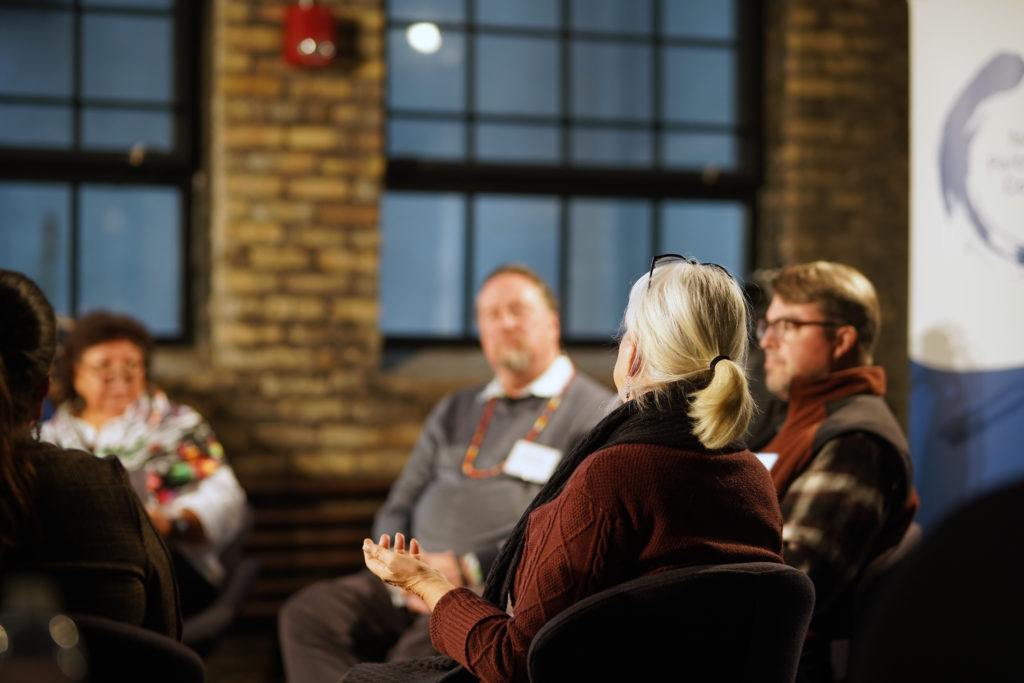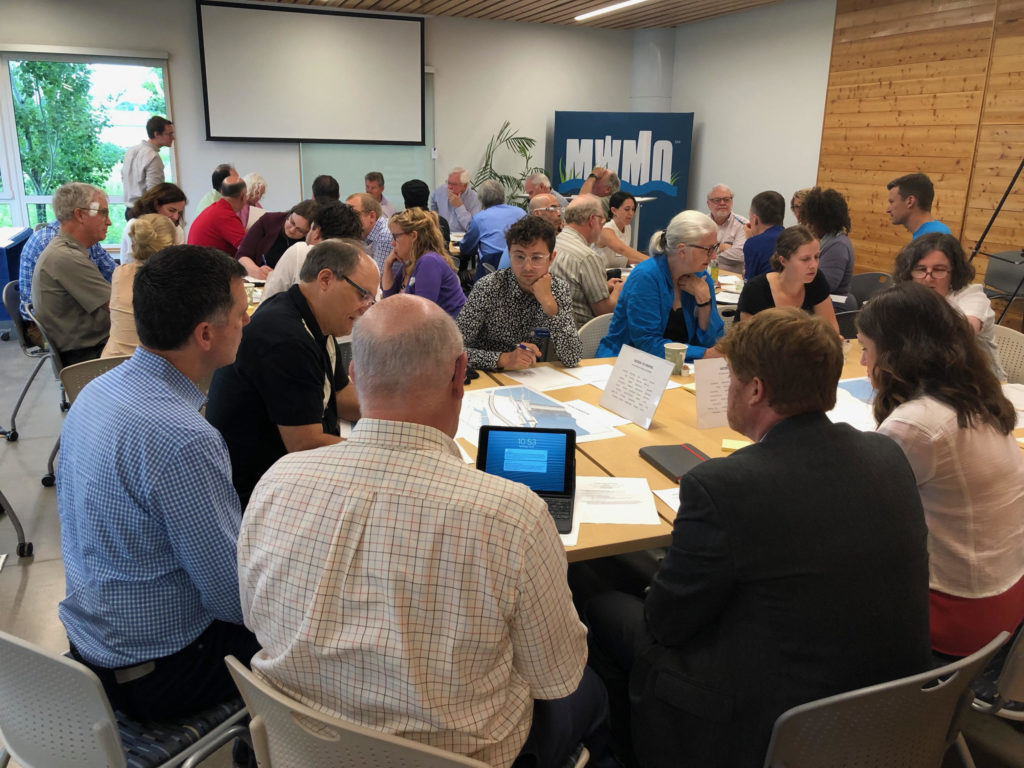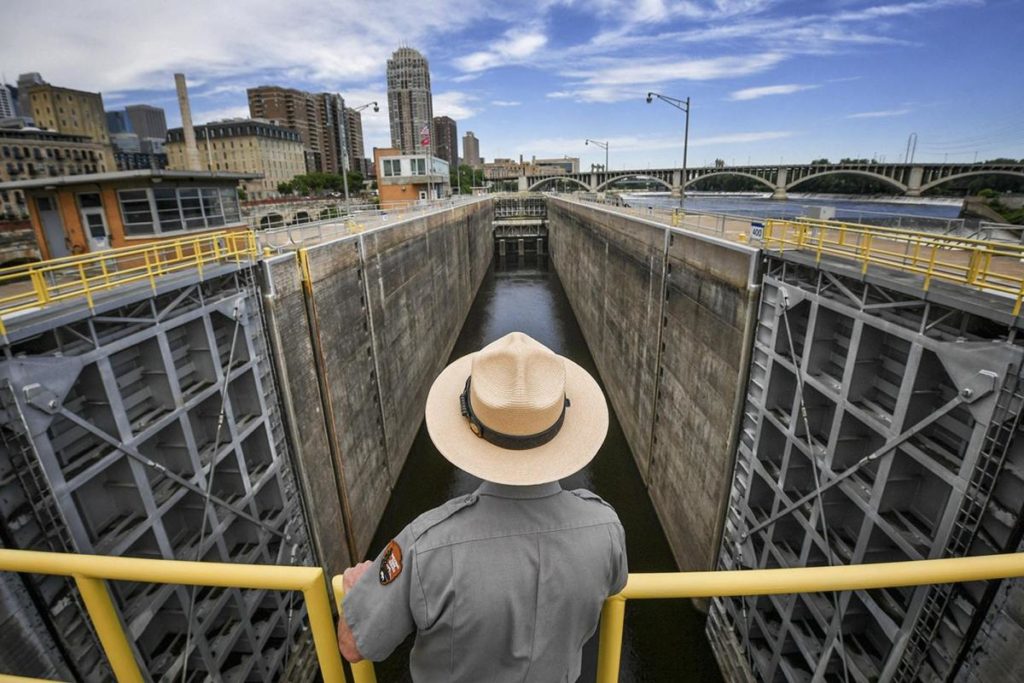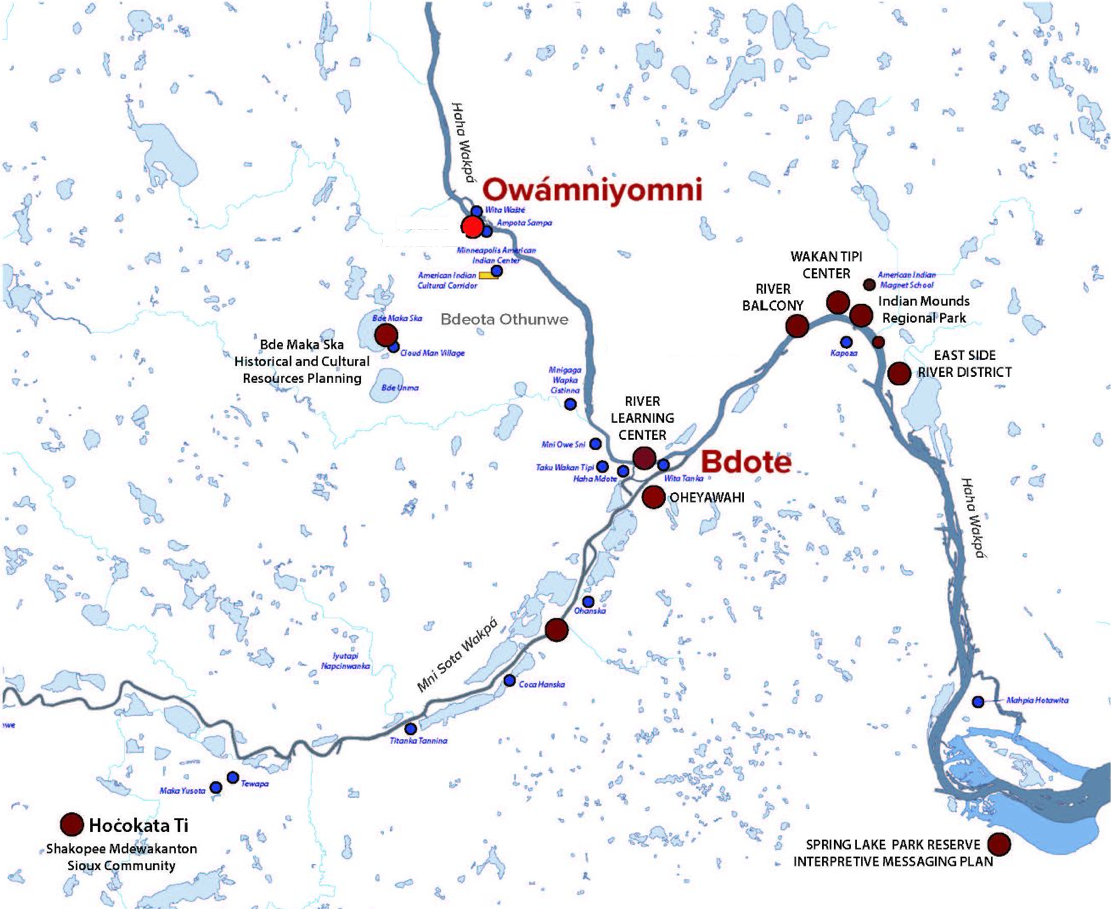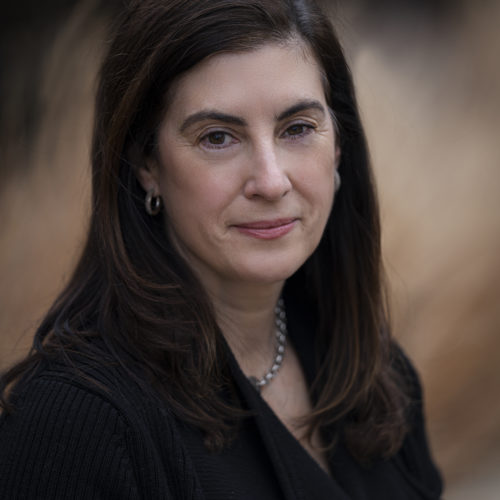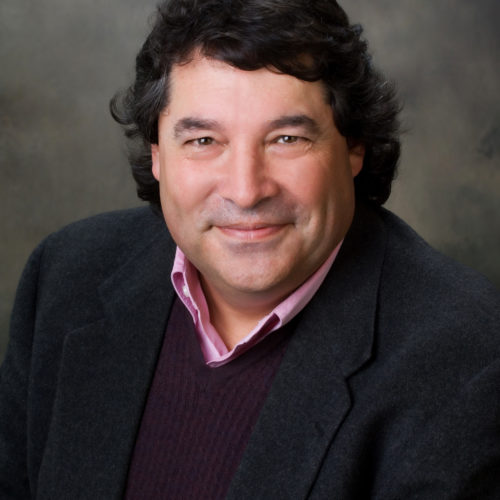Owámniyomni Okhódayapi is a 501(c)(3) non-profit working to build understanding and embrace the value of Indigenous perspectives tied to Owámniyomni, a significant site on the Mississippi River. We seek to transform the vacant, largely inaccessible land around Minneapolis’s Upper Lock into a place of healing, restoration, education, and connection. Our vision is to create places of healing and celebration that acknowledge the past and advance a more equitable and inclusive future.
Owámniyomni means “turbulent waters” in the Dakota language. Okhódaya translates to “to be friends with, to be friendly, or to befriend.” The words are pronounced: Oh-WAH-mini-yo-mini Oh-KOH-dah-yah-pee.
We are committed to upholding the following guiding principles in our work:
- Owámniyomni Okhódayapi will prioritize Native voices and experience.
- Owámniyomni Okhódayapi will engage the community in a process that provides opportunity for truth telling and healing and that informs grassroots decision making.
- Owámniyomni Okhódayapi will create public spaces where all are welcome.
- Owámniyomni Okhódayapi will connect people to the River and contribute to a holistic experience of the Central Riverfront and the Mississippi River.
- Owámniyomni Okhódayapi will pursue collective impact and partnerships that build trust and shared leadership.
The organization was founded in 2016 by Paul Reyelts and Mark Wilson in response to the closure of the Upper Lock to commercial navigation.
The organization was originally called the St. Anthony Falls Lock & Dam Conservancy and soon renamed to Friends of the Lock & Dam. Its focus was to prevent hydropower interests from further industrializing the site. The Friends convened community, business, and civic leaders to discuss creating a visitor center to increase tourism on the River.
In 2020, the organization transitioned to the name Friends of the Falls to emphasize that its mission was to protect and honor the Falls – the only major waterfall on the Mississippi River. The Friends set aside its concept for a visitor center and began a journey to engage with Native American communities and gain an understanding about the cultural and spiritual significance of this place.
The Friends committed to creating an engagement process centered on Native voices. We convened the Native Partnership Council and hosted a series of Community Conversations that brought Native and non-Native communities together to create a shared vision for the Falls. These discussions were grounded in Indigenous values, like Mitákuye Owas’iƞ (We Are All Relatives) and Mní Wičóni (Water is Life).
The recent transition to Owámniyomni Okhódayapi is not just another name change. It marks an important, intentional, and fundamental shift in how the organization operates. The name Owámniyomni Okhódayapi uplifts Dakota language and makes visible the fact that this is Dakota homeland. Owámniyomni Okhódayapi is Dakota-led and the organization has a Native American majority board of directors.
Learn more about Dakota language, orthographic variations, and the profound impacts of colonization on the Voices of the Falls blog.
We are dedicated to centering Native voices, strengthening our connections to Dakota relatives, and uplifting the actively silenced stories of Dakota people through our work at the Falls. We will continue this work in a good way.












